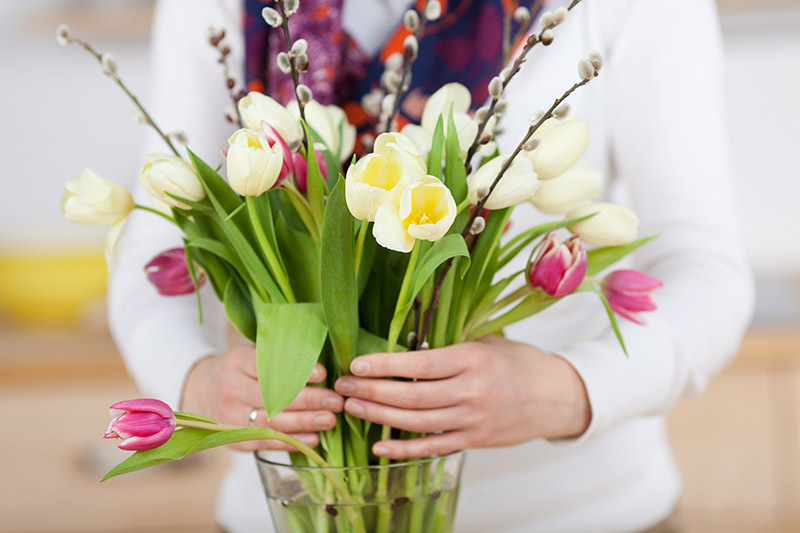Orchid Care Success: A Guide to Pristine Petals
Posted on 13/08/2025
Orchid Care Success: A Guide to Pristine Petals
Few plants can match the allure of orchids. With their elegant petals, delicate stems, and vibrant colors, these exotic beauties can fill any home or garden with drama and serenity. If you're eager to cultivate your own collection, mastering orchid care is essential. In this comprehensive article, you'll find everything you need to succeed, from watering wisdom to light requirements and troubleshooting tips. Let's embark on your journey to orchid care success, and unlock the secret to pristine orchid blooms!

Understanding Orchid Basics: What Makes Them Unique?
Before diving into the nitty-gritty of orchid care, it's important to understand what sets these plants apart. Orchids are part of the Orchidaceae family--the largest plant family in the world, boasting over 25,000 species. The diversity of orchids is astonishing, ranging from miniature varieties to large, show-stopping hybrids.
- Epiphytic Orchids: These beauties often grow on trees in tropical environments, using their roots to anchor to bark rather than soil.
- Terrestrial Orchids: Some varieties grow in the earth and are often hardier in climates with temperature fluctuations.
- Monopodial vs. Sympodial: Monopodial orchids, like the popular Phalaenopsis, grow upwards from a single stem. Sympodial orchids, like Cattleya, sprout from a rhizome, producing multiple stems.
Knowing your orchid type is crucial, as care requirements vary.
Optimal Lighting for Profuse Orchid Blooms
Lighting is the foundation of successful orchid cultivation. Orchids require just the right balance--too much sun can scorch their leaves, too little can prevent flowering.
How Much Light Do Orchids Need?
- Phalaenopsis (Moth Orchids): Prefer bright, indirect light. Windows facing east or north are ideal.
- Cattleya and Vanda Orchids: Thrive with more light--try a south or west window, but beware of direct midday sun in summer.
- Dendrobium: Enjoy strong, indirect light; can handle early morning or late afternoon sun.
Monitor your orchid leaves for clues: dark green leaves indicate low light, while yellow-green or red-tipped leaves may mean too much sun.
Watering Orchids: The Fine Balance for Success
Watering is often the trickiest part of orchid care. Orchids are prone to root rot if overwatered but can shrivel if left too dry. Striking the right balance is key to healthy orchids.
When Should You Water Orchids?
- Aim to water once every 7-10 days, but always check the medium first.
- Let the top two inches of the potting mix dry out before watering again.
- Water less in winter; more during hot, dry summers.
Top Tips for Pristine Orchid Roots
- Use room temperature water--cold or hot shocks orchids.
- Water in the morning to allow roots to dry by evening.
- Never let orchids sit in standing water; ensure pots have drainage holes.
- Mist leaves sparingly; excessive humidity on foliage can cause spots.
Humidity, Temperature, and Airflow: Creating the Perfect Orchid Climate
Originating from tropical environments, most orchids thrive in warm, humid conditions. Here's how to replicate their natural habitat:
Humidity Needs
- Optimal Range: 40-70% relative humidity is ideal for luxurious blooms.
- Use a humidity tray or room humidifier during dry winter months.
- Cluster orchids together to increase ambient moisture.
Temperature Requirements
- Daytime: 65-80?F (18-26?C)
- Night: 10-15 degrees cooler for best flowering results.
- Avoid placing orchids near drafts, radiators, or air conditioners.
Good Air Circulation
- Use a gentle fan or open windows (weather permitting).
- Stagnant, humid air breeds fungal problems--air movement keeps orchids healthy.
Potting Medium and Containers: The Foundation of Orchid Care Success
Orchids need much more than ordinary soil--they love airy, fast-draining mixes that let their roots breathe. Choosing the right orchid potting medium is fundamental to maintaining pristine petals and robust plants.
Best Orchid Potting Mixes:
- Bark-Based Mixes: Most common; ideal for epiphytes like Phalaenopsis and Cattleya.
- Sphagnum Moss: Retains more moisture, good for drier homes or mini orchids.
- Charcoal, Perlite, or Coconut Husk: Help with aeration and drainage.
Choosing the Right Pot
- Clear plastic pots let you observe root health and moisture.
- Terracotta or slatted pots promote airflow and dry out quickly.
- Always choose pots with ample drainage holes!
Repot orchids every 1-2 years to refresh their medium, encourage healthy roots, and remove decayed material.
Feeding Your Orchids: The Path to Lush Growth
For truly pristine petals, feeding is essential. Orchids are light feeders, but the right nutrients can make flowering more prolific and vibrant.
How to Fertilize Orchids
- Use a balanced, water-soluble orchid fertilizer (like 20-20-20) at half strength.
- Fertilize every 2-4 weeks during the growing season (spring and summer).
- Flush the medium with pure water monthly to avoid salt build-up.
- Withhold fertilizer in winter when growth is slowest.
Pruning and Grooming: Enhancing Orchid Beauty
Regular grooming is crucial for healthy, beautiful orchids in the long-term. Here are the best practices for maintaining pristine orchid petals:
- Trim spent flower spikes (except for reblooming types like Phalaenopsis) with sterilized scissors.
- Remove yellow or damaged leaves promptly to prevent disease spread.
- Clean leaves with a damp cloth; dust and sprays can clog pores.
- Inspect for pests--remove mealybugs, scale, or aphids by hand or with insecticidal soap.
Troubleshooting Common Orchid Problems
Even devoted orchid growers encounter challenges. Here's how to diagnose and fix common orchid care issues before they threaten your blooms.
Wilting or Yellow Leaves
- Caused by overwatering or under-watering.
- Check root health--mushy, brown roots signal rot; white and firm roots are healthy.
Orchid Not Flowering
- Insufficient light or improper temperature swings can delay blooming.
- Try moving your plant to a brighter location or ensure night temperatures are 10?F cooler than day.
Leaf Spots or Fungal Issues
- Increase air circulation and cut infected leaves with sterilized tools.
- Avoid misting leaves; water at the base.
Pests on Orchids
- Identify and remove with insecticidal soap or neem oil.
- Isolate affected plants to prevent spread.
Repotting Orchids: Keeping Roots Healthy and Vigor High
The secret to long-term orchid care success lies in routine repotting. Orchids outgrow their medium or suffer from degraded material that traps too much water.
When to Repot Orchids?
- Every 1-2 years, or when bark starts breaking down.
- If you notice tightly packed roots or little new growth.
- After flowering is complete.
How to Repot
- Gently remove the orchid and tease away old potting mix.
- Trim dead or mushy roots with sterilized scissors.
- Position in a new pot and fill with fresh orchid mix; ensure roots are loosely placed.
- Don't water for a few days after repotting to let root wounds heal.
Seasonal Orchid Care: Year-Round Tips
Orchids change throughout the seasons. To keep those pristine petals perfect, tailor your care:
- Spring/Summer: Increase water and fertilizer; provide shade from intense midday heat.
- Fall/Winter: Cut back on watering, reduce feeding, and maintain adequate humidity. Monitor for pests as windows close and airflow drops.
- Stimulate blooms by lowering night temperatures in the autumn.
Top 5 Orchid Varieties for Beginners
Success starts with the right plant. For those new to orchid care, consider these easy and rewarding varieties:
- Phalaenopsis (Moth Orchid): Long-lasting blooms, very forgiving.
- Dendrobium: Abundant flowers, resilient and easy.
- Cattleya: Vibrant colors, scented blooms.
- Oncidium ("Dancing Lady"): Cheerful yellow clusters, tolerant of various light levels.
- Paphiopedilum ("Slipper Orchid"): Unusual flowers and flexible about humidity.

Enriching Your Orchid Experience: Display, Propagation, and More
Once your confidence grows, enhance your orchid journey with creative displays and experimentation:
- Display: Use glass terrariums, bark mounts, and stylish pots to highlight your collection.
- Propagation: Some orchids can be divided or propagated from keikis (baby orchids)--a rewarding pursuit for advanced growers.
- Join Orchid Societies: Learn from seasoned experts and gain access to rare specimens and competitions.
Conclusion: Your Orchid Care Success Awaits
Caring for orchids isn't just about following a checklist--it's about observation, patience, and a willingness to learn. Armed with this comprehensive orchid care guide, you're fully prepared to nurture pristine petals year after year. Remember, every orchid tells its own story; experiment, adapt, and above all, enjoy the process. May your home and heart bloom with the undeniable elegance of thriving orchids!
Happy growing--and may you enjoy lasting orchid care success!
Latest Posts
What Flower Reflects Your True Identity?
Discover Flowers that Stand Strong: Top 12 Picks
Transform Your Poinsettias into Lasting Joy





